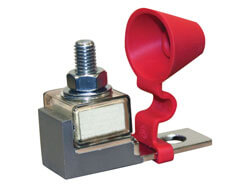Hey all,
Noob here (kind of)! I've seen several others ask this but didn't seem to see a solid answer. I pretty much want to do the exact setup in this video
except downsized to 1 EG4 6500 EX48 and smaller battery bank.
Looking at the plans and watching the video it seems pretty straight forward what adjustments are needed but I just wanted to do quick check.
So starting with the components listed on the 48V Offgrid Page from what I can tell I need this:
So the main difference being that since there are not 2 battery banks, and only 1 inverter the busbar is not needed and as a result of not having that 300A busbar there is no need for the 4/0 cables. Just 2/0 all the way through to the battery bank.
I can't seem to find the zero load draw of the EG4 6500 EX48 (I'm sure its on the forum somewhere but it doesn't seem to be in the manual) if anyone knows it.
Assuming that is all correct great! But the last question is that Will mentions in the video right about at 3:59 that SignatureSolar recommends putting this UL listed breaker instead. So if I wanted to go with this it makes sense that I would replace the 200A fuse and just toss this in there instead.
If anyone is interested I am setting up a small building on my property. I bought a ton of very cheap used solar panels (250 watt Canadian Solar) that I hope to fully off grid power. It will mainly run a bunch of LED lights and a 1 ton mini split heat pump (115v, ~800W) and have some AC outlets.
Thanks in advance guys.
Noob here (kind of)! I've seen several others ask this but didn't seem to see a solid answer. I pretty much want to do the exact setup in this video
Looking at the plans and watching the video it seems pretty straight forward what adjustments are needed but I just wanted to do quick check.
So starting with the components listed on the 48V Offgrid Page from what I can tell I need this:
- EG4 6500EX All-in-one Solar Power System (x1)
- 2/0 AWG Inverter Cables
- 200-300A T-Class Fuse (1x) (the one in the post is out of stock so I was thinking one of these instead)
- 300A Busbars to connect your all-in-one systems together (not needed in 1x system setup)
- 4/0 Cables for Battery to Busbar Connection (also not needed, instead use 2/0 AWG to above in line fuse then to the AIO)
- PV DC Isolator (1x)
- Hardiboard (x1)
So the main difference being that since there are not 2 battery banks, and only 1 inverter the busbar is not needed and as a result of not having that 300A busbar there is no need for the 4/0 cables. Just 2/0 all the way through to the battery bank.
I can't seem to find the zero load draw of the EG4 6500 EX48 (I'm sure its on the forum somewhere but it doesn't seem to be in the manual) if anyone knows it.
Assuming that is all correct great! But the last question is that Will mentions in the video right about at 3:59 that SignatureSolar recommends putting this UL listed breaker instead. So if I wanted to go with this it makes sense that I would replace the 200A fuse and just toss this in there instead.
If anyone is interested I am setting up a small building on my property. I bought a ton of very cheap used solar panels (250 watt Canadian Solar) that I hope to fully off grid power. It will mainly run a bunch of LED lights and a 1 ton mini split heat pump (115v, ~800W) and have some AC outlets.
Thanks in advance guys.
Last edited:




